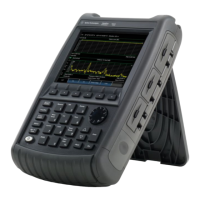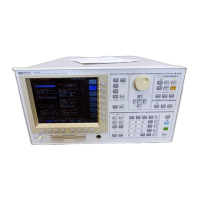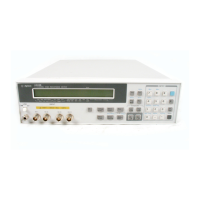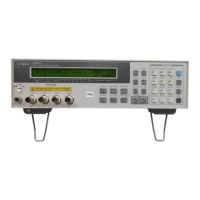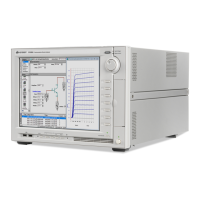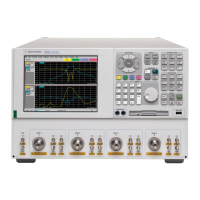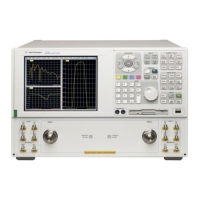NA (Network Analyzer) Mode 49
Then Trigger
Then Trig Slope
Then choose from the following:
o Positive Sweep is initiated by the rising edge of signal at about 1.7 V.
o Negative Sweep is initiated by the falling edge of signal at about 1.0 V.
Output Power
Set the power level out of the FieldFox to High, Low, or manually set power level
to a value between High and Low.
Generally, the high power setting is used when measuring passive, high-loss
devices to place the signal farther from the noise floor. However, for devices that
are sensitive to high power levels such as amplifiers, use the Low power setting.
For best measurement accuracy, use the Manual power setting at -15 dBm. After
calibration, the power level can be decreased for amplifiers, or increased for
higher dynamic range.
Caution Power Level settings in this mode will NOT change Power Level settings in other
modes. To help prevent damage to your DUT, use caution when changing modes
with your DUT connected to the FieldFox test ports.
How to set Output Power
Press Meas Setup 4.
Then Output Power
o High Sets output power to the maximum achievable power at all displayed
frequencies. Output power is NOT FLAT across the displayed FieldFox
frequency span. Please see the FieldFox Specifications (see page 214) for
expected power levels.
o Low Sets output power to approximately –45 dBm, FLAT across the
displayed FieldFox frequency span.
o Man (default setting at -15 dBm) Set output power to an arbitrary value,
FLAT across the displayed FieldFox frequency span. If flattened power can
NOT be achieved, a warning message and beep occurs. To achieve a
flattened output power, reduce the power level or stop frequency.
o Then press Power Level
o Then enter a value using the numeric keypad, the ▲|▼ arrows, or the rotary
knob.
o Press Enter.
System Impedance (Z0)
To accurately view data presented in Smith Chart format, first set the System
Impedance.
Learn how to select Smith Chart format on page 42.
Learn how to make 75Ω measurements at the FieldFox Supplemental Online
Help: http://na.tm.agilent.com/fieldfox/help/FieldFox.htm
